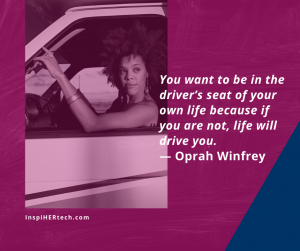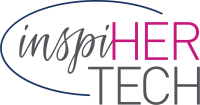I was recently talking with a coaching client whose job has significantly changed since Covid19. She has been moved to a new team helping to develop a new product.
Doesn’t sound so bad, right? Wrong!
She LOVED what she was doing before. She loved the people she worked with and the product she was working on. She felt fulfilled and knew she was making a difference. She also was not just coasting on something comfortable. She was continuing to add skills and feel excited about and challenged by her work.
Now she wonders what will happen once things start to get back to normal.
- Will she get to go back to her old role?
- Will they have parsed out her previous work and now there would no longer be a need for her expertise?
- Will she have to stay where she is at or will she be moved to another new team that she could like even less?
- What does this all mean to her career and salary advancement and overall satisfaction?
Everything was feeling out of her control.
Getting Back in the Driver’s Seat
As we talked through the still to be unknown, we uncovered some things she could do to set herself up for future success no matter what. She needed to feel back in the driver’s seat of her career. Check out the 4 simple steps we mapped out to get her there:
Step 1. Embrace the New. This may not be her choice of work, but she gets to choose how she will approach this new situation. A positive attitude with a desire to learn would make all the difference to her day and she knew that. We made a list of the things that were new and different in this role and that got her excitement up. She saw the opportunity of new technologies and systems she had not worked on before. She also saw some new people connections. Which brings us to Step 2.
Step 2. Make New Friends. She talked about a couple of members of the leadership team who were directly connected to this new product that she had never had the opportunity to interact within any sort of significant way. Now was her chance. Who knows what doors these relationships might open for her in the future?
Step 3. Put Processes in Place. She was clear that this was not going to be her long-term role. Given that, we talked about how she could make sure that she had everything working like clockwork. When the time came to discuss leaving this role, she would be able to make a clean handoff. Everything would be so well-documented that there would be no question what someone new would need to do in order to contribute and be successful right out of the gate.
Step 4. State Your Intention. She was going to do a great job in the current role. That was how she rolled. She also needed to make sure that the powers that be knew of her career aspirations. This is not a time to be quiet and hopes her desires were understood. If things had changed and the company objectives no longer aligned with her career objectives, she needed to know this sooner rather than later. Was it time to look for a new job? Open communication was key.
Things don’t always go as planned. Don’t let the unknowns run the show. Get in the driver’s seat and make yourself and your intentions known.

|
|
GM CEO Mary Barra talks about being in the driver’s seat at GM – in crisis and in preparation for the future |


